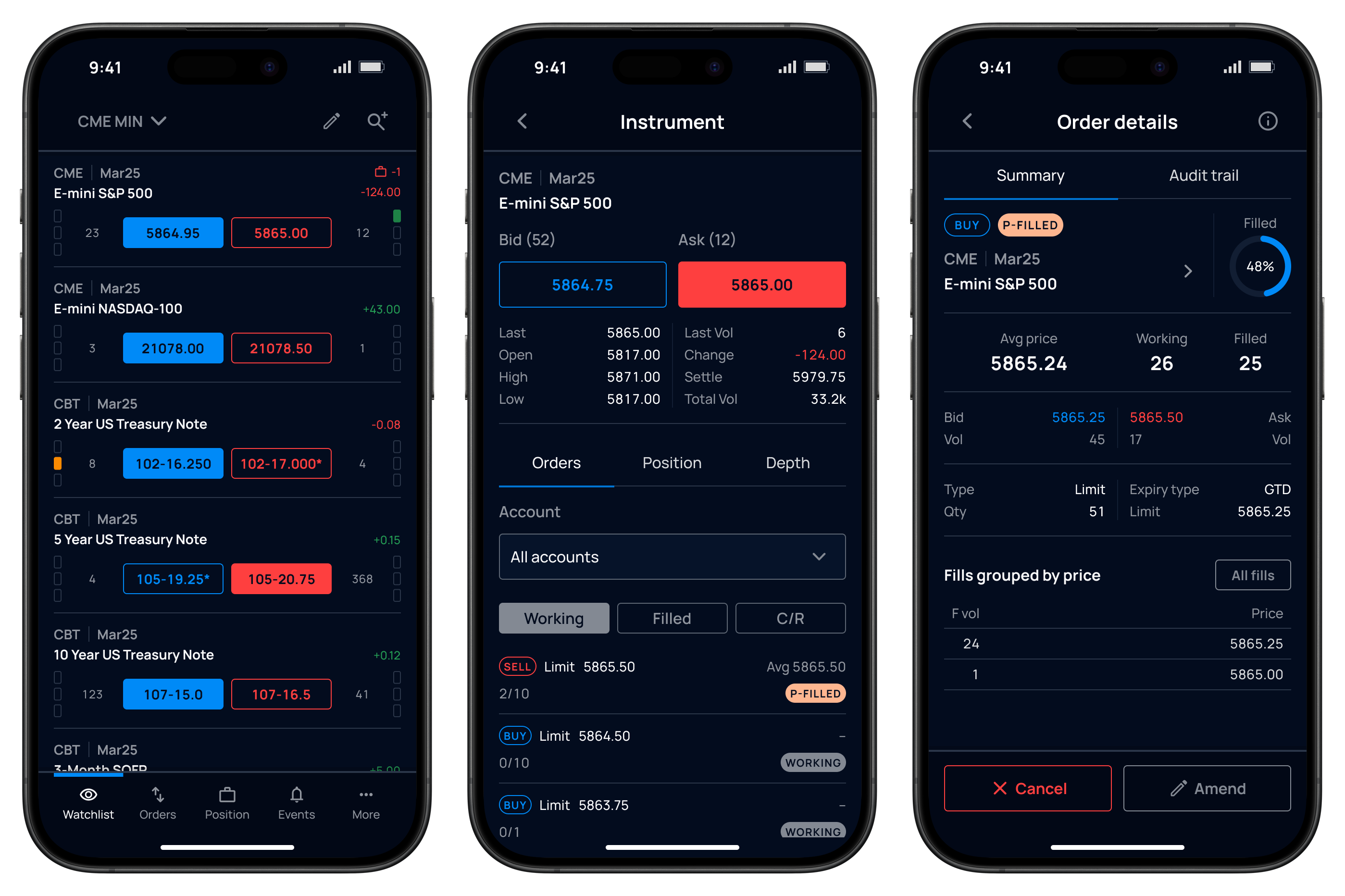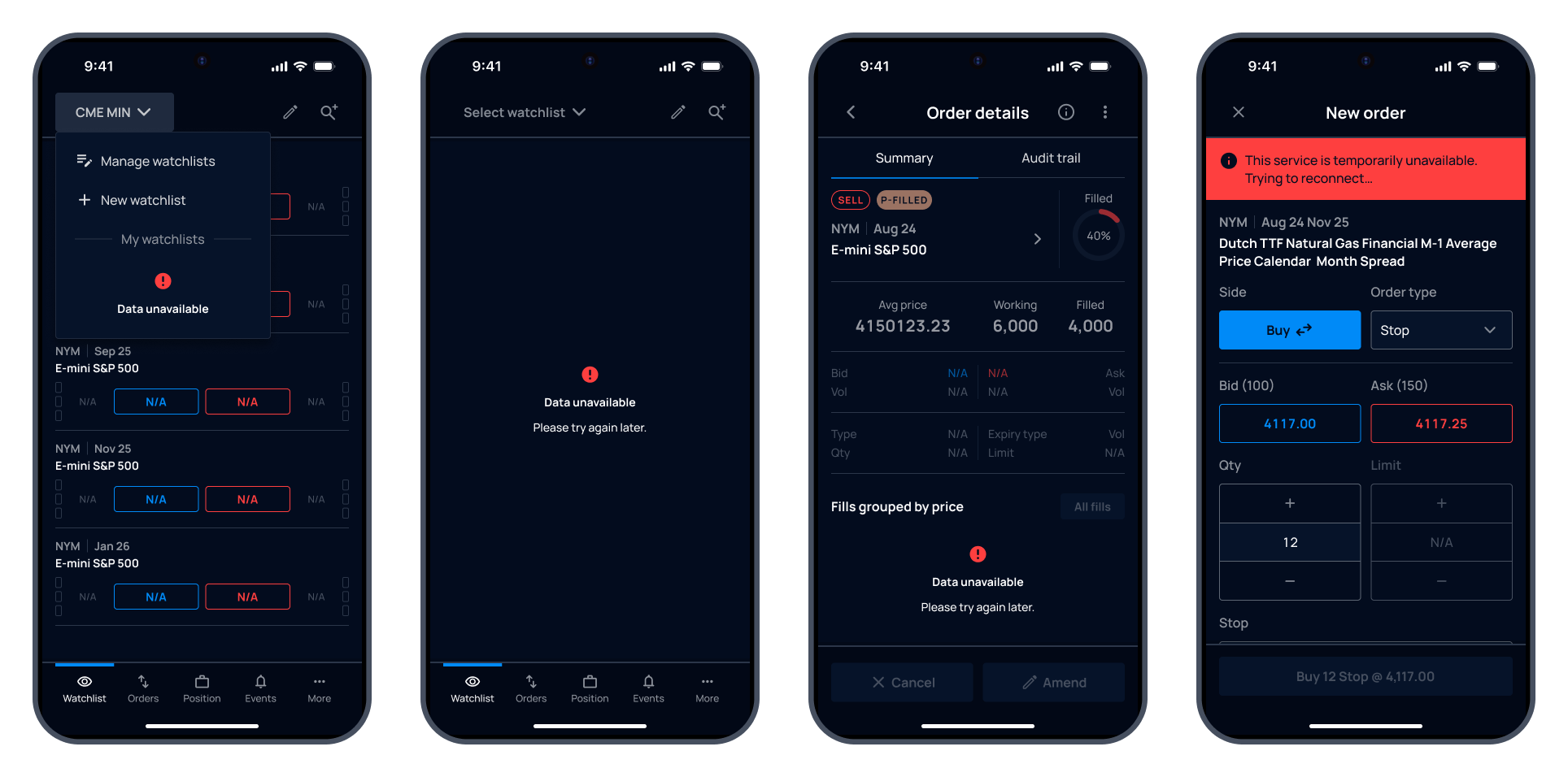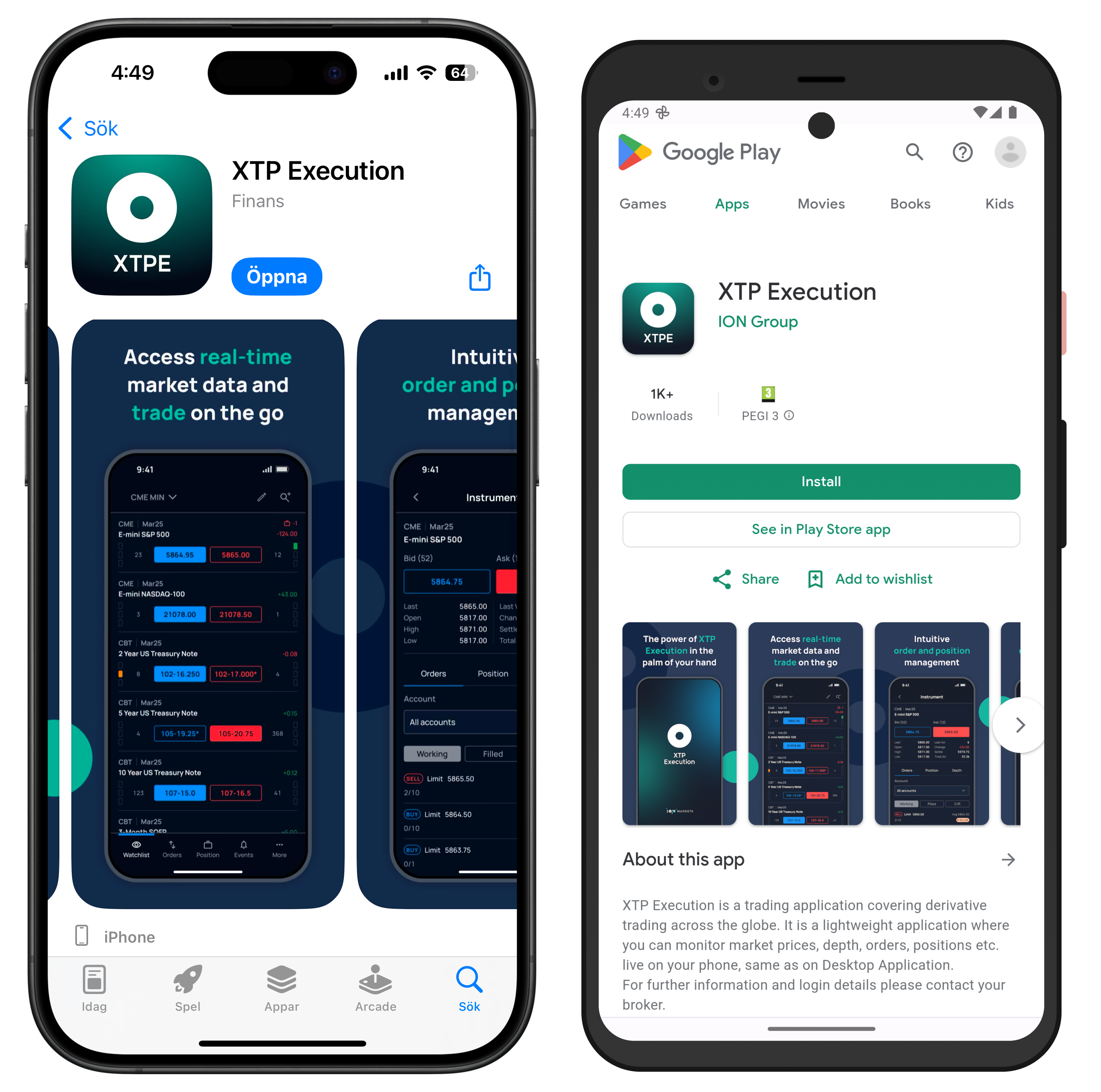
Feb 2024–Jun 2024 UX architect Prototyping Design System
Fidessa has long been a cornerstone in the Fintech industry, offering a comprehensive platform that allows users to manage the entire order and trade lifecycle from a powerful desktop application.
For years, customers have requested an alternative lightweight solution that enables users with basic order management needs to access data on the go. In response, I designed and led the development of a mobile application that bring efficiency and simplicity to customers with basic trading requirements.
In order to comply with a non-disclosure agreement, I have omitted confidential information in this case study. The content presented is based on information available to the public and does not reveal any confidential procedures.

Hi-fidelity screens of the Fintech Mobile App.
As the Lead User Experience Architect on this project, my responsabilities included conducting functionality audits, prioritizing features in collaboration with the Product Manager, and working closely with the development team. I enhanced Design System components, designed high-fidelity prototypes to showcase design improvements, gathered user feedback through usability sessions, and iteratively updated the designs.
The primary objective of this project was to develop a mobile trading application that offers seamless and intuitive user experience and simplifies the extensive functionality available on the desktop application without compromising on essential features.
Additionally, this project served as a foundation for defining design system components and patterns that were suitable for mobile devices. I collaborated with the Design System team and other product teams working on mobile applications, ensuring consistency and design alignment across the product portfolio.
Navigation and transitions prototype.
A structured and collaborative approach was adopted. I began by auditing the functionality and screens under consideration, this allowed me to understand the scope of features that needed to be included in the mobile version.
Using a prioritization method, together with the Product Manager, we defined focus areas and created a roadmap with key milestones. Features were prioritized based on user needs and business goals, ensuring that the most critical functionalities were addressed first.
Collaboration played a vital role throughout the project. Weekly meetings with the product and development teams were held to understand requirements, discuss design feasibility, and ensure alignment.
A significant aspect of the project was the integration with the company's design system. I took mobile design principles into consideration to introduce new screens and functionality. These designs helped shape the company’s design system by introducing mobile-specific patterns to the company’s design library.
High-fidelity prototypes were developed to showcase design improvements and validate them with users through usability testing sessions. The prototypes provided a tangible representation of the final product and allowed me to gather valuable feedback. Insights from these sessions were used to iteratively update the designs, addressing any issues and enhancing the user experience.
Once the designs were finalized, I helped creating detailed specifications with annotations. This allowed me to facilitate the handoff to the development team and enabled developers to inspect the design thoroughly and ensure accurate implementation.

A key challenge I faced was how to surface backend errors in a way that was both helpful and non-disruptive to users. Because the system relied on several interdependent services, some of which could become temporarily unresponsive, the frontend had to anticipate and respond to incomplete or failed requests. I worked to design UI patterns that made these moments understandable and recoverable, balancing transparency with reassurance, so users wouldn’t feel lost or frustrated when things didn’t go as expected.

Error information and recovery.
I successfully designed and led the implementation of a mobile trading solution that brings an intuitive and engaging user experience for traders with basic order management needs. Built on web technologies, this cost-effective solution enhances efficiency and simplicity for customers, enabling them to access over 200 global trading markets, 600 brokers, and connectivity worldwide with 6,500 buy-side accounts.

Releasing a Cleared Derivatives mobile application on the market also gave the company a competitive edge, attracting new clients who value innovation and require mobile access to global trading markets.
Mar 2023–Aug 2023 UX architect
Unlocking the product's potential through a reviewed information architecture and a refined Look and Feel of the application.
The following content may contain the trade names or trademarks of various third parties, and if so, any such use is solely for illustrative purposes only. All product and company names are trademarks™ or registered® trademarks of their respective holders. Use of them does not imply any affiliation with, endorsement by, or association of any kind between them and this site.